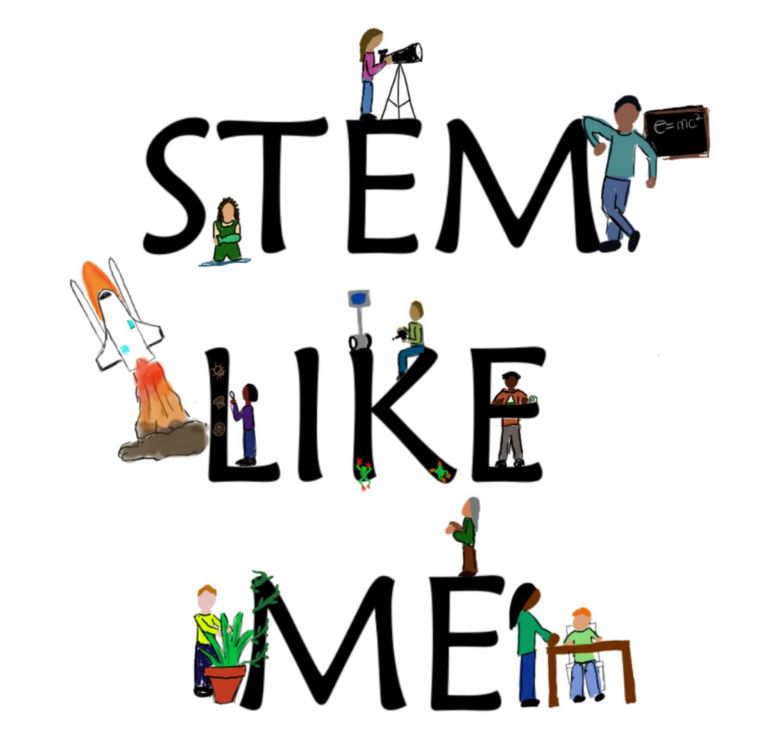
STEM Like Me Stories recognize diverse scholars in STEM fields that look like students in today’s classrooms. We continuously add new stories of STEM professionals to highlight the great people practicing science and engineering. If you have an idea of someone you think the STEM Center could feature, please contact us.
This page is currently being updated. Check back soon for more scientists!
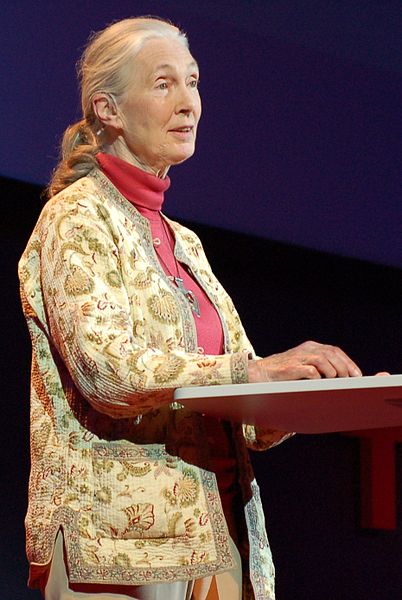
Jane Goodall – Jane Goodall is a Primatologist and Anthropologist studying Chimpanzee’s for over 55 years. Through her work in Africa, where she lived with Chimpanzee’s, Jane helped change our understanding about our closest relation in the animal kingdom. She discovered that chimpanzees make and use tools, hunt and eat meat, wage war, have strong bonds, and show acts of compassion. These discoveries have shown how similar chimpanzees are to humans. Jane Goodall is also an environmental conversation activist, a member of the United Nations, and an honorary member of the World Future Council.

Elliott Skinner – Elliott Skinner was an anthropologist who started his academic career later in life. Originally from Trinidad, Skinner immigrated to the United States during World War II and enlisted in the army. After the war ended, Skinner was granted American citizenship and enrolled in New York University. He continued his education at Columbia University, where he obtained his master’s and doctorate degrees in anthropology. During his schooling, Skinner’s research focused on ethnic interactions in British Guiana; however, his research focus later switched to West Africa. He moved to Burkina Faso to work; learned More, the common language; and later he was nominated as the U.S. Ambassador to the Upper Volta region by President Lyndon Johnson. This was a unique appointment, because Skinner was only the 11th Black American named as a U.S. Ambassador and also the only ambassador who conducted research in a country prior to appointment.
Skinner’s other work includes teaching African ethnology at New York University and Columbia University. He was also the first Black American to chair an Anthropology Department in the United States, when he was appointed chair at Columbia University. While he taught, Skinner continued to research the people of Upper Volta and published multiple books on the region. He also published books on how Africa has influenced U.S. foreign policy.

John James Audubon – World Migratory Bird day was Saturday, May 11. To celebrate the research of great ornithologists (scientists who study birds), the STEM Center is featuring John James Audubon as this week’s STEM Like Me scientist. Audubon was an American ornithologist, naturalist, and painter who was the first to document 25 species of birds. One of his greatest works is the color-plate book The Birds of America, which is considered to be one of the finest ornithological works ever completed. In his early life, Audubon was born in Haiti but soon thereafter moved to France where he lived until his father sent him to the United States to escape a war. Once in the United States, Audubon wanted to study and illustrate American birds in a more realistic manner than many other artists. He set ambitious goals of finding and painting all the birds of North America and to surpass the earlier ornithological work of Alexander Wilson.
He also began the first known bird-banding on the continent. He tied pieces of yarn to the legs of eastern phoebes, discovering that individuals of this species returned to the same nesting spots year after year. His study of birds included drawings and paintings, but he also systematically recorded the behaviors of the birds he illustrated. When working on The Birds of America, Audubon attempted to paint one page each day. He also re-painted earlier works as he learned new techniques in his painting. Audubon sought to publish his work in the United States, but North American publishers rebuffed his work. This led him to travel to England with over 300 drawings. His work of American wildlife was well-received in England, and he raised enough money to publish The Birds of America. This work consists of 435 hand-colored, life size prints of 497 bird species that are made from engraved copper plates. After publication of The Birds of America, Audubon came back to America and wrote a follow-up manuscript, Ornithological Biographies. This book is a collection of life histories for each species in The Birds of America.
Audubon inspired nearly all later ornithological works with his artistry and high standards. His book, The Birds of America, is still considered one of the greatest examples of naturalist book art. Today, The Birds of America is one of the world’s most expensive books, and one edition recently sold at auction for over $11 million. In Audubon, Pennsylvania, there is a museum open to the public that presents all of his major works. Henderson, Kentucky hosts the Audubon Museum at John James Audubon State Park where many of his original watercolors, engravings, and personal memorabilia are held. Audubon also had the National Audubon Society named in his honor, with the mission “to conserve and restore natural ecosystems, focusing on birds”. He has many other parks, towns, and more named in his honor.

Rachel Carson – In recognition of World Environmental Day and World Oceans Day this week, on June 5 and June 8 respectively, we are honoring Rachel Carson as this week’s STEM Like Me. Rachel Carson attended the Pennsylvania College for Women from 1925-1929, where she originally studied English before switching her major to biology. She then spent the summer at the Marine Biological Laboratory before attending John Hopkins in 1929 to study zoology and genetics. After receiving her master’s degree in zoology, Carson had to leave school instead of continuing for her doctorate to help support her family during the Great Depression. She began to work temporarily for the U.S. Bureau of Fisheries, where she wrote for a series of educational broadcasts, Romance Under the Waters. In 1936, Carson became the second woman to become a full-time employee of the Bureau of Fisheries as a junior aquatic biologist. Carson’s work led to her writing for many newspapers and journals, and she wrote many books throughout her career as well. The publication of The Sea Around Us, a life history of the ocean, earned Carson two honorary doctorates. After the publication of this book, she left the Bureau of Fisheries, now known as the Bureau of Fish and Wildlife Service, to pursue research and writing.
One of her other great accomplishments include the publication of Silent Spring, a warning about dichlorodiphenyltrichloroethane (DDT) and other pesticides. Her book heavily influenced governments to ban or restrict the use of DDT and similar pesticides and chemicals. The publication of this work is also helped launch the environmental movement. Carson passed away in 1964 after fighting breast cancer. Posthumously, Carson was awarded the Presidential Medal of Freedom and inducted into the National Women’s Hall of Fame.
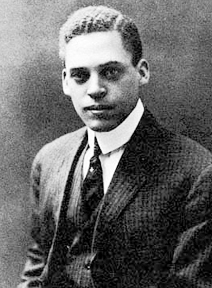
Ernest Everett Just – Ernest Everett Just was an African-American biologist who studied marine biology, cytology, and parthenogenesis. Just advocated that we should study the whole cell under normal conditions, rather than breaking apart the cell in a laboratory. He spent the majority of his career at Howard University; however, he always sought out positions at other school’s so he could focus more on his research. He had a difficult time finding these positions, so he often went to Europe to conduct research, where he was better accepted. In 1940, Just was working in France and did not leave at the government’s request. After Germany invaded France, Just was help as a prisoner-of-war while he was ill. He was rescued and diagnosed with pancreatic cancer, but died shortly after his diagnosis.
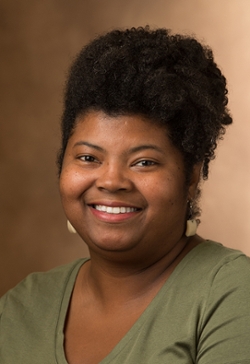
Danielle N. Lee is a behavioral biologist at SIUE. She obtained her Ph.D. in Biology from the University of Missouri – St. Louis in 2010 and her research focuses on how ecology and evolutionary components contribute to the behavior of animals. One of Lee’s research projects involves exploring the African giant pouch rat’s behaviors. Through this research, Lee hopes to discover if there are differences between the behaviors the giant pouch rat exhibits as well as if there is a genetic component to these differences in behavior. She is currently expanding this research to examine small rodents in the St. Louis Metropolitan area and their behavioral differences.
Lee is also passionate about STEM outreach and sharing science to general audiences, especially under-served groups. She typically does this with outdoor programming and social media. From 2011-2016, Lee wrote The Urban Scientist blog; where she wrote about her experiences as a researcher, issues of diversity in STEM, and urban ecology. Lee now primarily uses Twitter to share her science and outreach, and Huffington Post recognized her as a top scientist to follow. Lee has been awarded many times for her efforts to encourage minorities to join STEM; including being named a TED Fellow in 2015, a National Geographic Emerging Explorer for 2017, and a Plenary Speaker at the annual British Ecological Society meeting in 2018. On April 19, 2019, Lee gave a Ted Talk on how hip-hop helps us understand science.
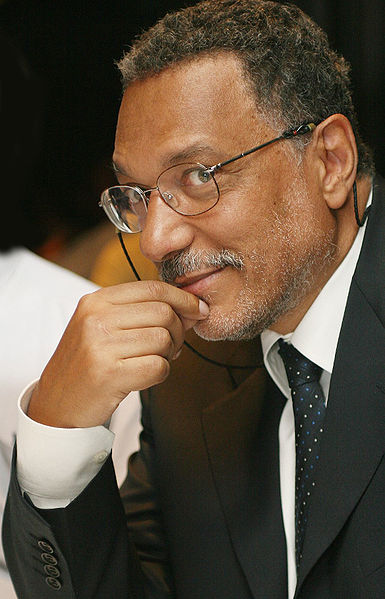
Daniel Pauly – Daniel Pauly is a French-born marine biologist known for his work in studying human impacts on global fisheries. Pauly grew up in Switzerland as a live-in servant until he ran away when he was 16 to put himself through school. His work at his high school and working with disabled people for a local institution led to receive a scholarship to the University of Kiel in Germany. While Pauly was at the University of Kiel he decided to study fisheries biology and stayed at Kiel University to complete his bachelor, master’s, and Ph.D. degrees. Pauly completed his degrees under the advisement of Gotthilf Hempel and studied the ecology of a small West African lagoon to establish relationships between the surface area of gills and the growth of fishes and aquatic (gill-breathing) invertebrates.
Pauly wanted to work in the tropics while devoting his life to applying his research so he could fishers, so he moved to the Philippines to work at the International Center for Living and Aquatic Resources Management. He stayed here for 15 years when he worked in the tropics and developed new techniques for estimating fish populations. Pauly helped create FishBase, which is an online encyclopedia comprised of information and data for over 30,000 different fish species.
Another prominent area of Pauly’s work has been his examination of the effects of overfishing. In 1995, he developed the concept of shifting baselines and authored the seminal paper, “Fishing Down Marine Food Webs” in 1998. In 2003 he was labeled as an “iconoclaust” by the New York Times and earned a place in the “Scientific American 50”. Throughout his career he’s won various other prizes, medals, and awards for his work. To date, Pauly has written multiple books and over 500 scientific papers.
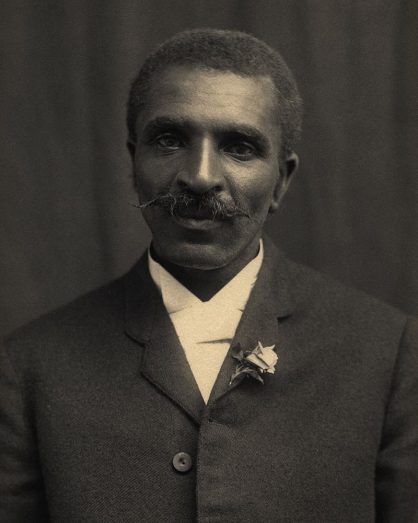
George Washington Carver – George Washington Carver was an agricultural scientist and inventor who actively promoted the use of crop rotation. Carver was born a slave and overcame many life challenges to pursue a career in science. He left his family to continue his education at various schools and applied to several colleges before being accepted. Once he arrived at that college, he was denied entrance due to his race. This led him to move and homestead a claim in Kansas, where he maintained a small plot of plants and flower. He also grew and harvested rice, corn, and garden produce, as well as fruit trees and forest trees. Finally, he was accepted into Simpson College in Indianola, Iowa, where he studied art and piano but was encouraged to study botany at Iowa State Agricultural College.
After obtaining a degree from Iowa State and working there, Carver was hired to work at the Tuskegee Institute. While there, Carver became passionate about improving the quality of life for poor farmers, so he worked to develop techniques to improve soil quality and encouraged poor farmers to grow alternative crops besides cotton. By growing foods like peanuts and sweet potatoes, these farmers could grow more foods for themselves. Carver even created bulletins for farmers, one of which contained 105 food recipes for using peanuts. He also spent time developing products made from peanuts. Besides peanuts, Carver also researched new uses for sweet potatoes, soybeans, pecans, and more. With his innovative agricultural research, an invitation to speak at the 1920 Peanut Growers Association national conference, and his testimony in a 1921 federal case on the tariff of peanuts, he became known as a scholar, expert in the field of agriculture, and environmentalist.

Katherine Esau – Katherine Esau was a botanist who grew up in Russia and Germany before immigrating to the U.S. in 1922. During her time in the U.S., Esau worked at a company studying sugar beet reactions to a virus before going to school at the University of California, Davis to obtain her doctorate. Esau stayed at UCD throughout her career where she was a pioneer in the study of plant anatomy. She wrote two books that have become seminal works in plant structural biology: Plant Anatomy and Anatomy of Seed Plants. Throughout her career, her research focused on how plant viruses affected the food conducting tissue (phloem) and plant development.
Esau was nationally recognized for her work with phloem, and was elected as a Fellow of the American Academy of Arts and Sciences, as a member of the National Academy of Sciences, and was awarded the National Medal of Science by President George H.W. Bush. Esau has also had awards named in her honor, including the award given annually at the Botanical Society of America to a graduate student who is carrying forward the field of structural and developmental biology.

Helia Bravo Hollis – Helia Bravo Hollis was a Mexican botanist who focused her research on the cultivation of flowers and the taxonomy of Cactaceae: the plant family of cacti. Throughout her distinguished career, Bravo helped co-found the Mexican Cactus Society, and the Botanical Gardens at the National Autonomous University of Mexico (UNAM) in 1959. She also has a botanical garden named after her that houses many endangered cacti. While focusing on the taxonomy of cacti, she organized a collection of live plants to observe their development and evaluate morphological characteristics. Through her work with cacti and succulents, Bravo has over 160 publications, 60 taxonomy descriptions, and 50 reclassifications. Bravo went to UNAM for her bachelor’s and master’s degrees, and received an honorary doctorate later in life.
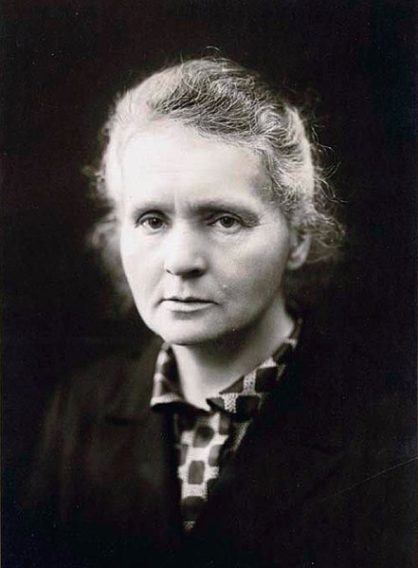
Marie Curie – Marie Curie was a famous physicist and chemist who, with the help of her husband Pierre, discovered radioactivity. In 1903, Marie Curie, Pierre Curie, and Henri Becquerel won the Nobel Prize in Physics for their discovery of spontaneous radioactivity. Marie Curie was the first woman to ever win a Nobel Prize, and the only woman to ever win two, and the only person to win a Nobel Prize in two different sciences. Her second was a Nobel Prize in Chemistry, for the discovery of polonium and radium.
Some of her other important achievements include the founding of the Curies Institutes in Paris and in Warsaw, discovering the use of radium gas as a cancer treatment, and the creation of X-Ray trucks during World War I.
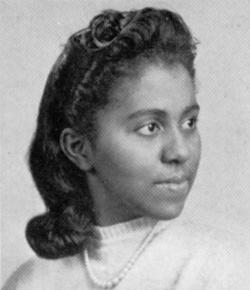
Marie Maynard Daly – Marie Maynard Daly was the first Black American woman in the United States to earn a Ph.D. in Chemistry. She was inspired to pursue chemistry by her father, and attended Queens College, New York University, and Columbia University, to obtain her degrees. In memory of her father, she established a scholarship for African American chemistry and physics majors at Queens college after she retired from teaching.
After Daly obtained her Ph.D. from Columbia University, she worked as a physical science instructor and conducted research for a few years before becoming a professor of biochemistry and of medicine at the Albert Einstein College of Medicine. She stayed at this school until her retirement in 1986. Through her work, Dr. Daly studied histones, proteins, the relationship between cholesterol and hypertension, and the uptake of creatine by muscle cells.
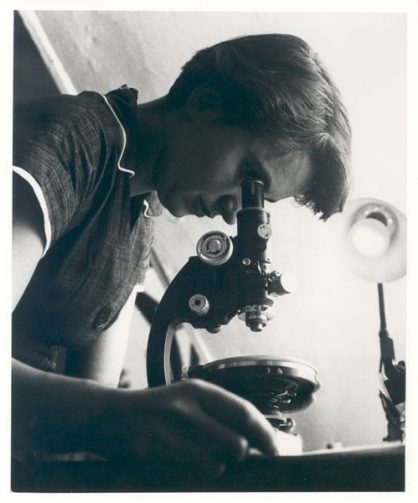
Rosalind Franklin – Thursday, April 25th, was DNA Day. We are celebrating DNA Day by featuring Rosalind Franklin as our STEM Like Me scientist of the week. Rosalind Franklin was an English chemist who helped the scientific community understand the molecular structure of DNA, RNA, viruses, and more. She worked at the British Coal Utilisation Research Association from 1942-1947, when she began her research on coal and earned a Ph.D. In 1947, she moved to Paris for her post-doctoral research, and became an accomplished X-ray crystallographer. Then in 1951, she became a research associate at King’s College London, working on X-ray diffraction studies. Through these studies, Franklin captured what would later be discovered as the first image of DNA, Photo 51: an image that led to the discovery of the double helix shape that makes up DNA.
Franklin’s colleague, Maurice Wilkins, would later show her picture to James Watson and Francis Crick, who were also researching the structure of DNA. This was done without Franklin’s permission, and Watson and his colleagues were able to deduce the structure of DNA through Franklin’s photo. They went on to publish a series of articles about the discovery, and only mentioned Franklin’s contributions in a footnote. She left King’s College in 1953 due to disagreements with Wilkins, and moved to Birkbeck College. She stayed here conducting pioneering research on the molecular structure of viruses until her death in 1958. Four years after her death, Watson, Crick, and Wilkins won the Nobel Prize in Physiology or Medicine for the discovery of the double helix structure of DNA. While there was not a rule against posthumous awards, the Nobel Committee does not generally make posthumous nominations so Rosalind Franklin did not receive an award. We still want to recognize her for her contributions to our understanding of DNA.
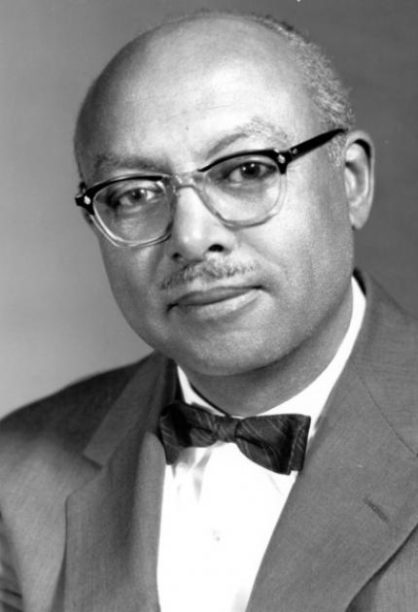
Walter Lincoln Hawkins – Walter Lincoln Hawkins was an African-American chemist and engineer who was a pioneer of polymer chemistry. Hawkins graduated with a bachelor’s degree in chemical engineering from Rensselar Polytechnic Institute before going on to Howard University for a master’s degree in chemistry. He continued his education at McGill University in Canada where he earned a doctoral degree in chemistry. After obtaining a PhD, he worked at Columbia University through a fellowship from the National Research Council. He then became the first African-American to join the technical staff of Bell Laboratories. While working at Bell Laboratories, Hawkins contributed to the development of a rubber substitute. He also worked on a new type of insulation for telephone cables, which was made of a lighter material that could hold up against temperature fluctuations, last up to 70 years, and was less expensive than led. Subsequently, telephones were installed in rural areas leading thousands of people to receive affordable telephone service.
He later became the assistant director of Bell Laboratories chemical research lab. Hawkins work focused on developing new products and new methods of recycling for various polymers. His work with plastics led to developments to help plastics last longer but also become recyclable. After his retirement from Bell Laboratories, Hawkins began teaching and becoming an advocate for college students to study science and engineering. In 1992, Hawkins passed away due to heart failure, but earlier that year he received the National Medal of Technology from President George H.W. Bush at the White House.

Rigoberto Hernandez – Rigoberto Hernandez is an American chemist. Born in Cuba, Hernandez moved around the world before settling in Florida when he was a child. His interest in science was sparked while in high school, when the University of Miami offered a research program. This interest then led Hernandez to attend Princeton University for an undergraduate degree in chemical engineering and mathematics. He continued his education at the University of California, Berkeley with a doctorate degree in chemistry.
Hernandez now works at Johns Hopkins where he studies chemical reactions, transition state theory, and non-equilibrium stochastic dynamics. He is also director of the Open Chemistry Collaborative in Diversity Equity (OXIDE) program, which if funded by the NSF, NIH, and U.S. Department of Energy. The aim of this program is to increase participation in the chemical sciences, especially for those people who have been traditionally underrepresented in the sciences. Other aims are to support research and awareness of issues of diversity in chemistry fields. Hernandez has won many awards for his work in diversity and research in the southeast. Some of these awards include the ACS Award for Encouraging Disadvantaged Students into Careers in the Chemical Sciences, the 2015 Diversity Award from the Council for Chemical Research, the 2017 Herty Metal, and the 2016 Transformational Research and Excellence in Education Award.
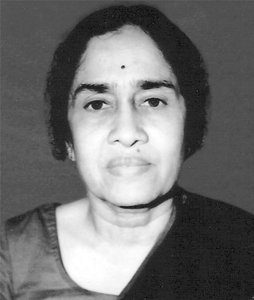
Kamala Sohonie – Kamala Sohonie was a pioneer of biochemistry in India, and the first Indian woman to receive a PhD in a scientific field. After obtaining a bachelor’s degree in Chemistry and Physics from Bombay University, Kamala applied to the Indian Institute of Science. She was the first woman accepted into the program; however, her acceptance was conditional and did not come without struggles. While here she obtained a MS degree, and was then invited to Cambridge University to work and study for her PhD. She then returned to India where she was appointed Professor and Head of the Department of Biochemistry at Lady Hardinge Medical College. After marrying her husband, she joined the Royal Institute of Science as a professor of biochemistry, and later became Director of the Institute. While Sohonie researched many different aspects of biochemistry throughout her career, her most notable work was in the effects of vitamins and the nutritional values of pulses, paddy, and foods consumed by some of the poorest sections of Indian. She received the Rashtrapati Award for her work with the palm extract ‘Neera’. Through her research in this subject she found that adding Neera to the diets of malnourished adolescents and pregnant women was significantly beneficial to their health and an inexpensive option.
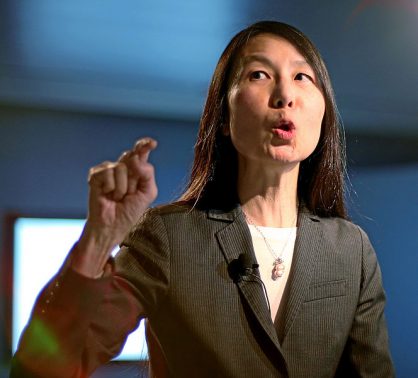
Jeannette Wing – Jeannette Wing is a world-renowned computer scientist for her work on Linearizability, the Liskov Substitution Principle, and computational thinking. Through her work, we are able to better understand how computer systems run effectively. She also helped describe computational thinking in her 2006 paper, where she also helped define a movement towards making students more prepared to use computers as they solve problems and understand the world. This paper has been featured in many National Science Foundation proposals, including the STEM+C project at the STEM Center in which we are learning about integrating STEM and computational thinking into curriculum. Jeanette earned her degrees in Electrical Engineering and Computer Science from MIT, where she studied under Ronald Rivest, John Resier, and John Guttag. She went on to teach at the University of Southern California. Most her career was spent at Carnegie Mellon University as a professor and then as head of the Computer Science Department. In 2013, she left Carnegie Mellon to work as Corporate Vice President of Microsoft Research. She is now Avanessians Director of the Data Sciences Institute at Columbia University, where she is also a professor of computer science.
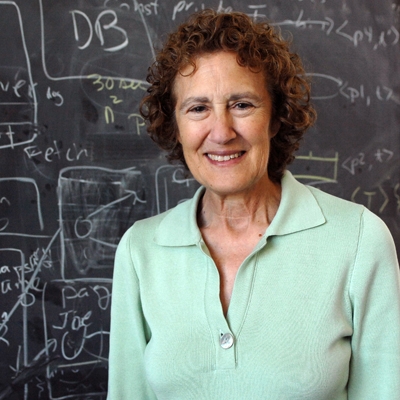
Barbara Liskov – Barbara Liskov is a computer scientist who was born and raised in Los Angeles, California before moving to Berkeley to attend the University of California for her bachelor’s degree in mathematics. After obtaining her degree, she moved to Boston and worked at the Mitre Corporation. This career choice altered her interests from mathematics to computers and programming. While Liskov originally had debated pursuing a graduate degree in mathematics, her time at Mitre Corporation changed her mind. She left Mitre after a year and began working in language translation at Harvard. This led her to apply to graduate programs in computer science, and she ultimately became one of the first women in the United States to be awarded a PhD from Stanford University in computer science.
Once she obtained her PhD, Liskov went back to Mitre to work as a research staff member. During this time, she was involved in many projects relating to new computer systems and programs. She supported the design and start-up of CLU (a programming language), contributed to the Venus operating system, Argus, and Thor. She also developed, in collaboration with Jeannette Wing, the Liskov substitution principle, which is a particular definition of subtyping. Currently, Liskov is the Ford Professor of Engineering at MIT, where she leads the programming methodology group and research focused on Byzantine fault tolerance and distributed computing. Throughout her life, Liskov has won many awards and is a member of several internationally recognized societies. In 2002, Liskov was recognized as among the top 50 faculty members in the sciences as well as one of the 50 most important women in science. She received the John von Neumann Medal and the Turing Award for her work in programming languages, methodology, and distributed systems. In 2012, she was inducted into the National Inventors Hall of Fame.
